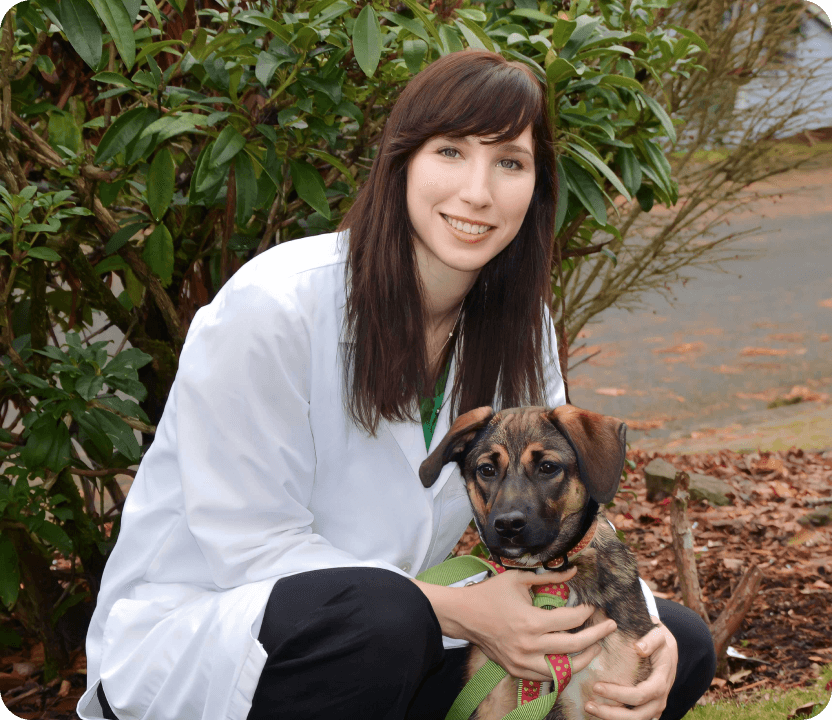Explore the health benefits and potential risks of dog saliva. Learn how to manage your pet’s oral health effectively.
- Home/
- Dog/
- Health & Wellness/
- Dog Saliva: 6 Fascinating Facts You Probably Didn’t Know
Dog Saliva: 6 Fascinating Facts You Probably Didn’t Know

Dog saliva has long been surrounded by myths and legends. Many of us have heard that dog saliva has healing properties, right? But what’s the truth behind this slimy subject?
Whether you’ve heard that dog saliva can heal wounds or simply wonder why your dog drools so much, we’re here to reveal some surprising facts about dog saliva that might just change the way you think about your pup’s slobbery kisses.
Dog Salivary Glands: Understanding the Basics
Saliva is produced by the salivary glands, which are essential for keeping your dog’s mouth moist and aiding in digestion.
Dogs have four main salivary glands:
- Parotid
- Mandibular
- Sublingual
- Zygomatic glands
Located around the mouth and jaw, these glands work together to produce the saliva that helps with swallowing, breaking down food, and, of course, a bit of drooling.

There are also numerous minor salivary glands, which are not visible to the naked eye yet also help in the production of saliva.
While their saliva is similar to ours, certain differences make it unique, ranging from pH to bacterial composition.
Can Dogs Spit?
Unlike humans, who can spit intentionally, dogs don’t have the ability to spit voluntarily due to their oral and facial muscle structure. What sometimes appears to be “spitting” in dogs is usually a reflexive response to certain stimuli, like nausea or the anticipation of food. For instance, a dog may start drooling excessively when they’re excited about a meal or feeling queasy.
This reflexive drooling can lead to saliva spilling out of the mouth, especially in breeds with loose jowls. So, while dogs may look like they’re spitting, it’s simply an involuntary reaction to their environment or emotional state.

Is Dog Saliva Antibacterial?
One of the most popular myths about dog saliva is that it has healing properties. But is there any truth to this? Research suggests that their saliva does contain certain proteins and enzymes with mild antibacterial properties, which can help clean minor wounds.
However, canine saliva isn’t a replacement for proper wound care. Not only can licking promote irritation and inflammation, but a dog’s mouth is also home to a variety of bacteria that could lead to infection. If your dog has a wound that they are attempting to lick, it’s best to put on an E-collar to help prevent further trauma until you can get them to the vet.
6 Interesting Dog Saliva Facts
1. Saliva Aids in Temperature Control
Unlike humans, dogs don’t have sweat glands all over their bodies. Instead, they rely heavily on panting to regulate their body temperature. When a dog pants, it increases airflow over their moist tongue and through their mouth, allowing saliva to play a crucial role in evaporative cooling.
As the saliva evaporates, it helps lower the body temperature, effectively keeping your dog cool. This mechanism is especially important during hot weather.
2. Dog Saliva has Mild Antimicrobial Properties
Can a dog’s saliva heal wounds? As mentioned above, there’s a common belief that dog saliva has healing properties, but this is only partially true. Dog saliva contains certain enzymes, like lysozyme, and protein, such as histatin, which may have mild antibacterial qualities that help cleanse minor cuts.
However, allowing a dog to lick open wounds is not advised, as their saliva also harbors various bacteria that could potentially lead to infection, irritation, inflammation, and delayed healing. Bacteria such as Pasteurella and Capnocytophaga are commonly found in a dog’s mouth and, if introduced to an open wound, could worsen the injury. Dogs typically have 600 types of bacteria in the mouth, versus 615 in the human mouth.
3. Dog Saliva as a Scent Identifier
Dogs have a complex communication system that relies heavily on scent. When a dog licks or drools on something, they leave behind a unique scent marker in their saliva. This behavior allows dogs to communicate with one another through scent trails, marking territory, or even leaving a “calling card” for other dogs to find.
This unique property of dog saliva as a scent identifier is part of why dogs often lick objects or other animals in their environment, as they are naturally inclined to use scent as a means of communication.
4. It’s a Digestive Aid
Saliva in humans contains essential enzymes like amylase, which start breaking down starches and carbohydrates as soon as it enters the mouth. Dog saliva contains minimal levels of amylase, but saliva still plays an important role in digestion by helping to lubricate and move food down the esophagus.
5. Dog Saliva Isn’t Cleaner Than Ours
Many people believe that a dog’s mouth is cleaner than a human’s – but this isn’t true. Both humans and dogs have a high number of bacteria (known as the oral microbiome) in their mouths — around 600 different species each – however, the types of bacteria differ significantly. Additionally, dogs are exposed to environmental factors, such as eating non-food items, that can increase bacterial presence and lead to dental issues.
Bacteria like Porphyromonas can be found in both species and may contribute to periodontal disease. However most bacteria in a dog’s mouth are not zoonotic, meaning they aren’t easily transmitted to humans.
6. Dog Saliva and Dental Health
While their saliva helps wash away some food particles from the teeth, it’s not a substitute for proper dental hygiene. Saliva has natural cleansing properties that can help reduce some bacteria buildup, but it doesn’t prevent plaque or tartar formation on its own.
Regular dental care, like brushing and providing dental chews, is essential for maintaining good dental health in dogs. Without regular care, bacteria will build up, leading to dental issues such as gingivitis, periodontal disease, and tooth decay. Dog saliva provides some support, but it’s no match for the benefits of routine dental cleaning!
Can You Get Diseases from Dog Saliva?
Bacteria like Capnocytophaga and Pasteurella, which are typically harmless to dogs and are a common part of their oral microbiome, can sometimes cause illness in humans, particularly those with compromised immune systems.
Even certain types of parasites, such as giardia, could be spread through close contact with saliva if your dog licks their bottom after defecating. Transmission is relatively uncommon, but practicing good hygiene, like washing hands after handling your dog, can minimize any risk.
Rabies is another well-known disease that is transmitted via saliva. In most cases, this is through the bite of an infected animal, however, it can also be transmitted if saliva comes into contact with an open wound or mucous membrane (eyes, nose, mouth). This deadly virus can be prevented by vaccinating your pets, avoiding contact with wild animals, and promptly reporting animal bites.

Dog Saliva Allergy: Can You Be Allergic to Dog Saliva?
While many people think of pet allergies as simply being allergic to dog fur or dander, for some, the issue lies in dog saliva. Dog saliva allergy can cause a range of uncomfortable symptoms, including hives, itching, sneezing, and even asthma-like reactions in severe cases. This is because dog saliva contains certain proteins that, when transferred to the skin or inhaled through dried saliva particles, can trigger an immune response in sensitive individuals.
If you’re allergic to dog saliva, you might notice symptoms flare up after a lick from your dog or when petting a dog that’s been licking itself. Unfortunately, even hypoallergenic breeds aren’t always safe for people with saliva allergies, as it’s the proteins in the saliva — not the fur — that cause reactions.
To manage a dog saliva allergy, regular handwashing and avoiding direct contact with your dog’s saliva can help reduce symptoms. For those with severe allergies, allergy medications or immunotherapy may offer additional relief. Talking to a healthcare provider can also help you find ways to manage symptoms without having to limit interactions with your dog.
Hypersalivation in Dogs: When to Worry
Hypersalivation, or excessive drooling, is fairly common in dogs, especially breeds with larger jowls. However, if you notice your dog drooling more than usual or their saliva appears thick or sticky, it may be a sign of a health issue.
Conditions like dental disease, nausea, or even heatstroke can cause excessive salivation. Breeds like Bulldogs and Basset Hounds are naturally prone to drooling due to their facial structure. But any sudden change in saliva production or consistency warrants a check-in with your vet.

Other issues can affect your dog’s salivary glands as well, ranging from salivary mucoceles (fluid-filled swellings under the skin caused by saliva leaking from a damaged salivary gland or duct) to sialadenitis (inflammation of the salivary glands).
Final Thoughts on Dog Saliva
Canine saliva is more than just a byproduct of slobbery kisses! From its antibacterial enzymes to its role in temperature regulation, saliva serves a variety of purposes for our canine companions. But as much as we love our dogs, it’s wise to practice a little caution when it comes to their saliva. Particularly when it comes to open wounds or allergies. By understanding more about what makes dog saliva unique, we can appreciate both its benefits and the myths surrounding it.
Sources
https://pmc.ncbi.nlm.nih.gov/articles/PMC3652036
 B
B




